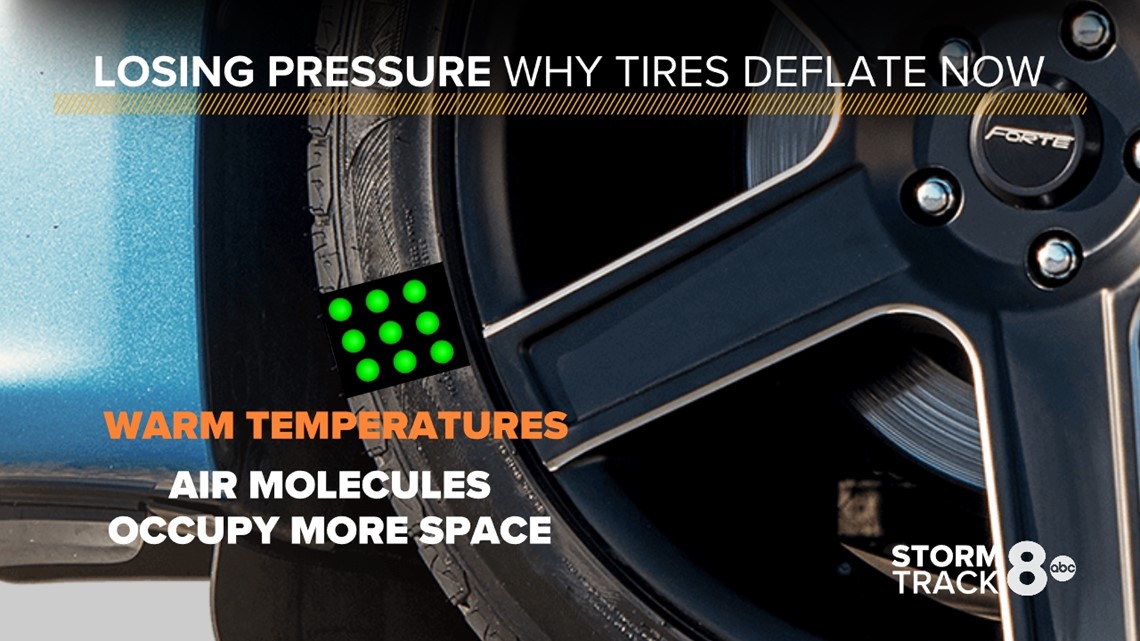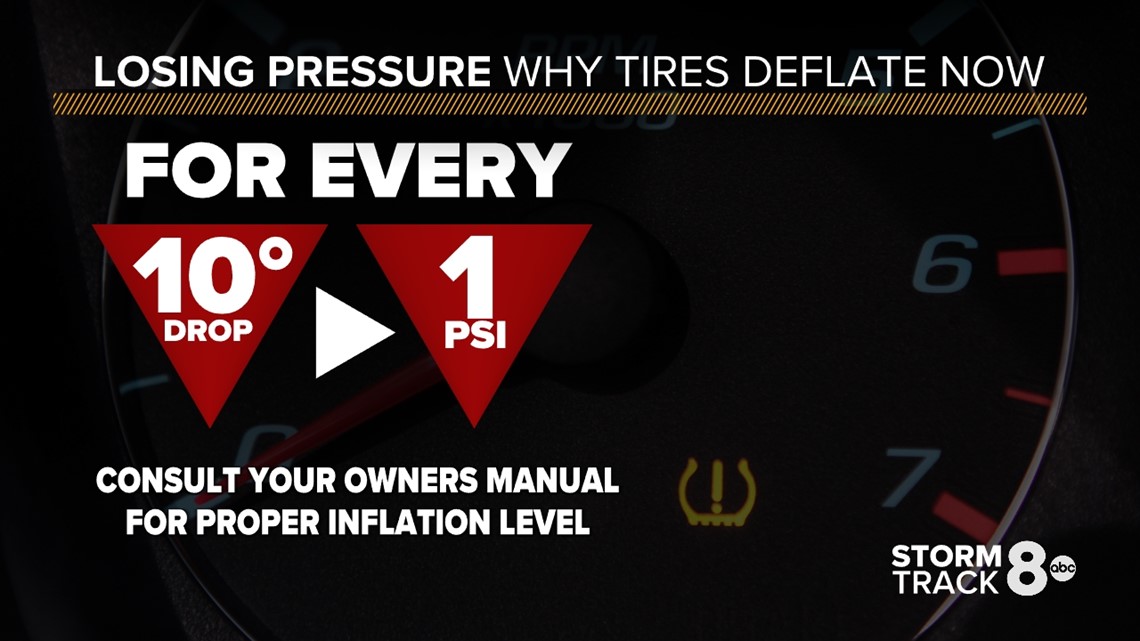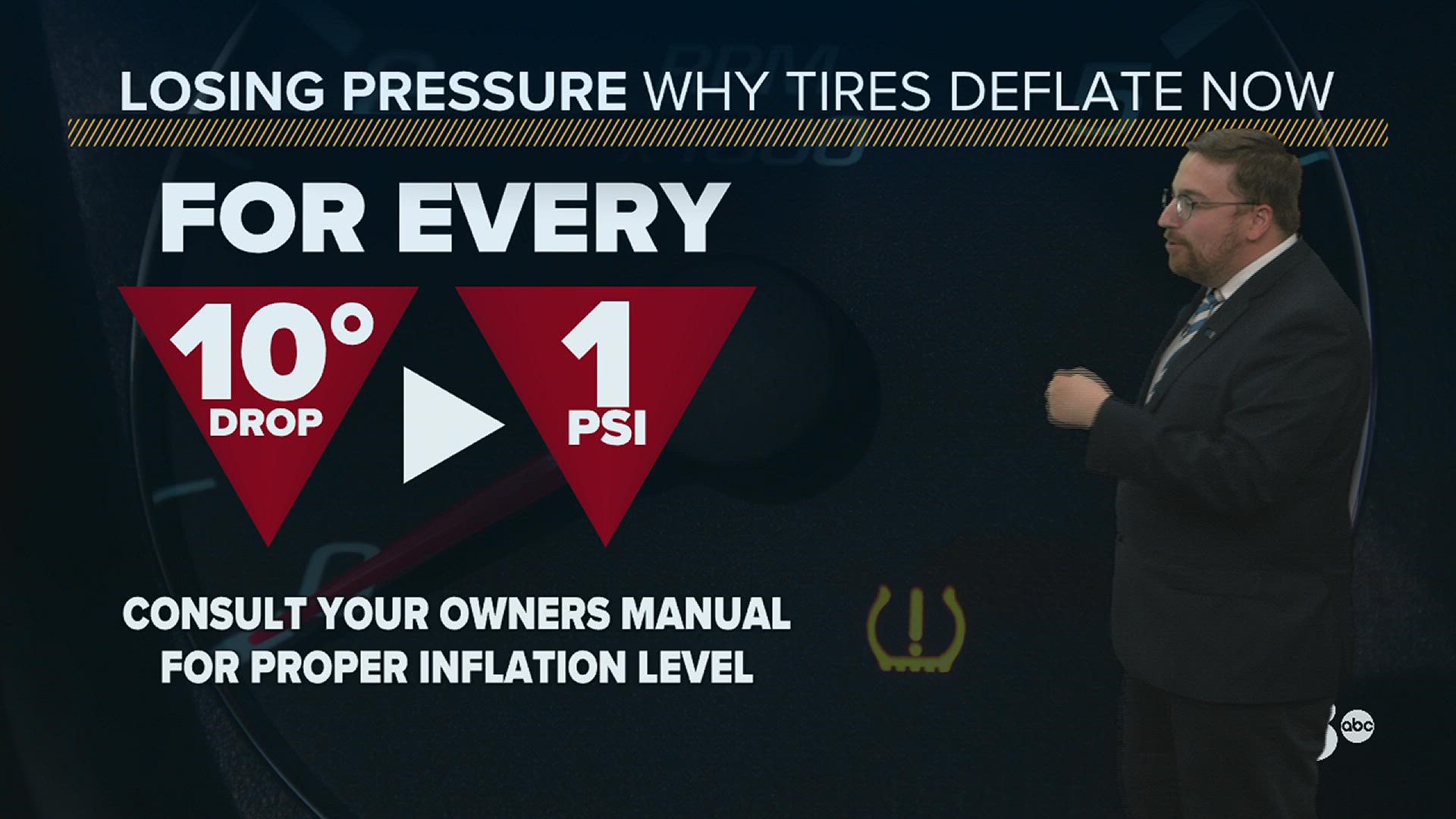MOLINE, Ill. — Picture it: Your rushing to your car first thing in the morning, coffee in hand. You start your vehicle when suddenly a warm, yellow glow is glaring at you straight in the face. That dreaded low tire pressure warning comes scrolling across the information system screen on the dashboard of your vehicle. Another sign that fall has arrived.
What is a tire pressure monitoring system?
Nearly all modern vehicles are equipped with a tire pressure monitoring system. Sensors attached to the valve stem of your tires constantly monitor pressure while the vehicle is running. Driving around with tires that are under-inflated has been proven to be dangerous, leading to rollovers and other types of accidents when the tires eventually fail.
That's why keeping an eye on your tire pressure levels throughout the season is so important. Don't forget the fuel savings, either! There is one season, in particular, though, that really wreaks havoc on how much pressure is inside your tires. That would be fall.


During periods of warmer weather, air molecules tend to occupy more space, keeping your tires inflated. However, as temperatures cool off outside significantly in the fall, the same goes for the air in your tires. Air molecules located within a cooler air mass tend to occupy less space, causing your tire pressure to drop quickly.


For every 10 degrees Fahrenheit drop in temperature, there is a one pound per square inch drop in tire pressure. It's not unusual for a typical fall day to see a temperature swing of 30 degrees or more. Compound several of those in a week and that's a lot of pressure your tires can lose!
There is a way to avoid this altogether ...
Many dealerships and vehicle service centers offer nitrogen as an alternative to traditional air when inflating tires. This option works best for our climate here in the Quad Cities because nitrogen molecules are much larger than regular air molecules, making them less vulnerable to large temperature swings.
Have a question you would like me to answer for an upcoming Ask Andrew segment? Submit it, here!
AAA's Tire Pressure 101 guide can help you measure your pressure!

